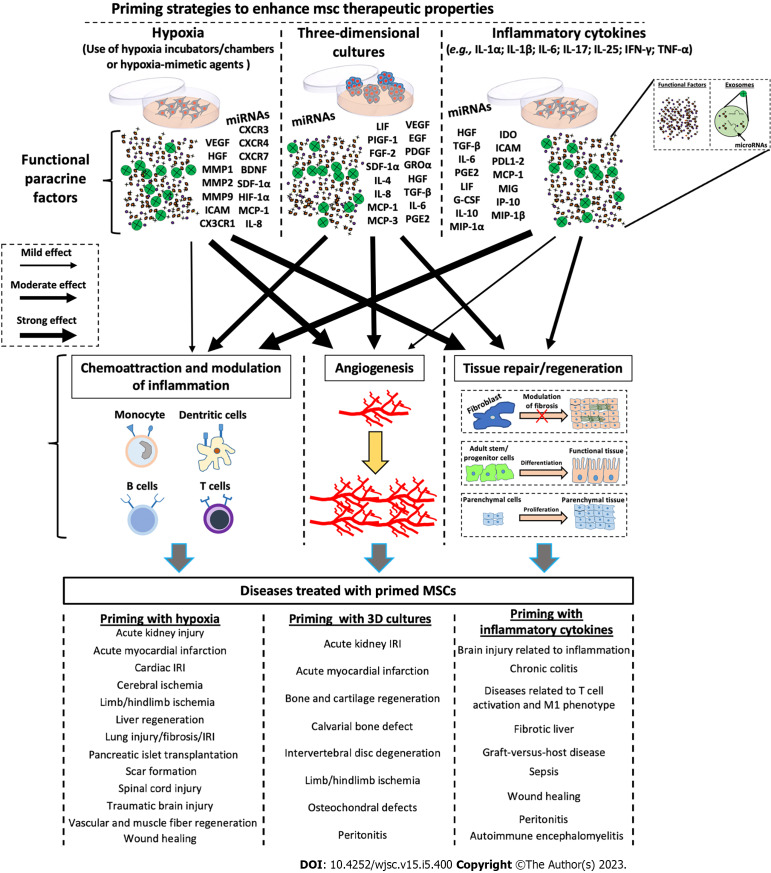Figure 2.
Schematic representation of the molecular effects after priming of mesenchymal stromal/stem cells. Mesenchymal stromal/stem cells (MSCs) can be primed through various stimuli, including hypoxia, three-dimensional cultures, and pro-inflammatory cytokines to enhance their therapeutic potential. Each priming method induces the production of specific factors (e.g., trophic factors, angiogenetic factors, chemokines, cytokines, and exosomes containing both proteins and microRNAs), which induce the activation of biological processes such as angiogenesis, tissue repair/regeneration, chemoattraction, and modulation of inflammation. Each priming strategy seems to stimulate the production of functional factors in a different way, thus eliciting different responses. miRNA: MicroRNA; VEGF: Vascular endothelial-derived growth factor; CXCR: Chemokine receptor; HGF: Hepatocyte growth factor; MMP: Matrix metallopeptidase; BDNF: Brain-derived neurotrophic factor; SDF: Stromal cell-derived factor; HIF: Hypoxia-inducible factor; ICAM: Intercellular adhesion molecules; MCP: Monocyte chemoattractant protein; IL: Interleukin; LIF: Leukemia inhibitory factor; PIGF: Placental growth factor; EGF: Epidermal growth factor; FGF: Basic fibroblast growth factor; PDGF: Platelet-derived growth factor; GRO: Growth-related oncogene; TGF: Transforming growth factor; PGE2: Prostaglandin E2; IDO: Indoleamine 2,3-dioxygenase; PDL1-2: Programmed death ligand 1-2; MIG: Monokine induced by interferon-gamma; G-CSF: Granulocyte colony-stimulating factor; IP-10: Induced protein 10; MIP: Macrophage inflammatory protein; IRI: Ischemia/reperfusion injury; MSCs: Mesenchymal stromal/stem cells; 3D: Three-dimensional.

